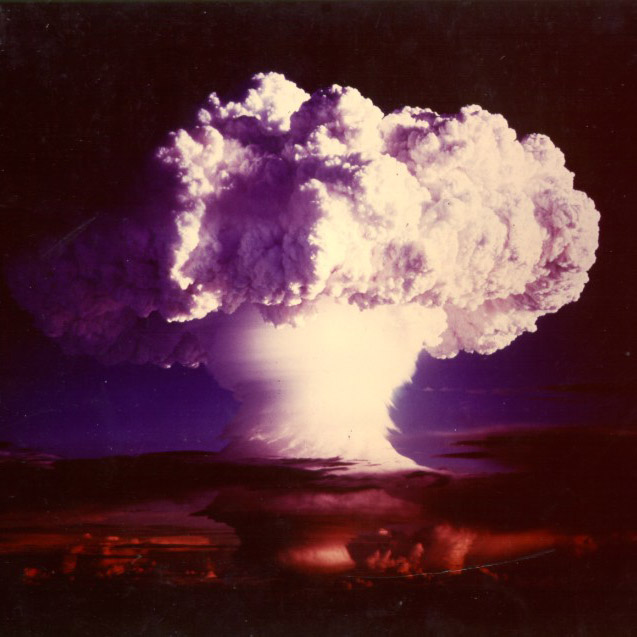Aynştaynyum
99
Es
Grup
yok
Periyot
7
Blok
f
Protonlar
Elektronlar
Nötronlar
99
99
153
Temel Özellikleri
Atom numarası
99
Atom ağırlığı
[252]
Kütle Numarası
252
Kategori
Aktinit
Renk
yok
Radyoaktif
Evet
Named after Albert Einstein
Kristal yapısı
yok
Tarihi
Einsteinium was discovered as a component of the debris of the first hydrogen bomb explosion in 1952.
It was identified by Albert Ghiorso and co-workers at the University of California, Berkeley in collaboration with the Argonne and Los Alamos National Laboratories, in the fallout from the Ivy Mike nuclear test.
The new element was produced by the nuclear explosion in miniscule amounts by the addition of 15 neutrons to uranium-238.
It was identified by Albert Ghiorso and co-workers at the University of California, Berkeley in collaboration with the Argonne and Los Alamos National Laboratories, in the fallout from the Ivy Mike nuclear test.
The new element was produced by the nuclear explosion in miniscule amounts by the addition of 15 neutrons to uranium-238.
Enerji seviyesi başına Elektronlar
2, 8, 18, 32, 29, 8, 2
Elektron dizilimi
[Rn] 5f11 7s2
Einsteinium is the first divalent metal in the actinide series
Fiziksel Özellikleri
Faz
Katı
Yoğunluk
8,84 g/cm3
Ergime noktası
1133,15 K | 860 °C | 1580 °F
Kaynama noktası
-
Ergime ısısı
yok kJ/mol
Buharlaşma ısısı
yok kJ/mol
Isı kapasitesi
- J/g·K
Dünya kabuğundaki bulunulabilirliği
yok
Evrendeki bulunulabilirliği
yok

Resim kaynağı: Wikimedia Commons (National Nuclear Security Administration)
Einsteinium, Ivy Mike nükleer testinin sızıntısında ilk kez gözlemlendi
CAS Numarası
7429-92-7
PubChem CID Numarası
yok
Atom Özellikleri
Atom yarıçapı
-
Kovalent yarıçapı
-
Elektronegatifliği
1,3 (Pauling ölçeği)
İyonlaşma enerjisi
6,42 eV
Atomik Hacim
28,5 cm3/mol
Isıl iletkenlik
0,1 W/cm·K
Yükseltgenme seviyeleri
2, 3
Uygulamalar
Einsteinium is mainly used for scientific research purposes.
The rare isotope einsteinium-254 is favored for production of ultraheavy elements.
Einsteinium-254 was used as the calibration marker in the chemical analysis spectrometer of the Surveyor 5 lunar probe.
The rare isotope einsteinium-254 is favored for production of ultraheavy elements.
Einsteinium-254 was used as the calibration marker in the chemical analysis spectrometer of the Surveyor 5 lunar probe.
Einsteinium is harmful due to its radioactivity
İzotoplar
Kararlı izotoplar
-Kararsız izotoplar
240Es, 241Es, 242Es, 243Es, 244Es, 245Es, 246Es, 247Es, 248Es, 249Es, 250Es, 251Es, 252Es, 253Es, 254Es, 255Es, 256Es, 257Es, 258Es